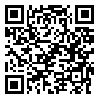BibTeX | RIS | EndNote | Medlars | ProCite | Reference Manager | RefWorks
Send citation to:
URL: http://sjh.umsha.ac.ir/article-1-302-en.html

 , Seyyed Ali Shamsian
, Seyyed Ali Shamsian 
 , Hosein Nahravanian
, Hosein Nahravanian 
 , Mahmood Mahmoudi
, Mahmood Mahmoudi 
 , Seyyed Mohammad Javad Yazdanpanah
, Seyyed Mohammad Javad Yazdanpanah 
 , Farhad Fathi Moghadam
, Farhad Fathi Moghadam 
 , Maryam Shahi
, Maryam Shahi 

Introduction & Objective: Leishmaniasis is a major worldwide health problem throughout the world and in Iran as well. Skin lesions are mostly healing but nonhealing cases have also increased recently. T-helper type1 (Th1) responses induction helps the patients to resist against the disease while T-helper type2 (Th2) responses cause susceptibility to disease. With the assessment of IL-5, IL-10, IL-12, and IL-18 cytokines secreted from peripheral blood mononuclear cells (PBMC) in leishmaniasis healing and nonhealing patients, their role in curing leishmaniasis was surveyed.
Materials & Methods: Cytokines secreted from PBMCs of 60 healing and nonhealing patients and also control group referred to Ab-o-Bargh number1 clinic and Mashhad Qaem hospital during 2007 were evaluated Elisa commercial kits after stimulation by leishmania antigen and mitogen in vitro.
Results: Healing patients PBMCs secreted IL-12 (236.55±38.00 pg/ml) more than non healing patients (p<0.05) while in nonhealing patients IL-5 (52.14±65.21 pg/ml) and IL-10 (30.19±18.73 pg/ml) secreted more than healing patients (p<0.005). Also IL-18 secreted significantly higher in nonhealing patients compared with healing patients (p=0.003).
Conclusion: According to the results It can be concluded that IL-12 is secreted more in healing patients than nonhealing patients but IL-18, which causes the increase of IL-12 secretion and the activation of Th1 cells during IL-12 secretion decrease, secrets more in nonhealing patients, induces Th2 responses and results in disease progression
| Rights and permissions | |
 |
This work is licensed under a Creative Commons Attribution-NonCommercial 4.0 International License. |



